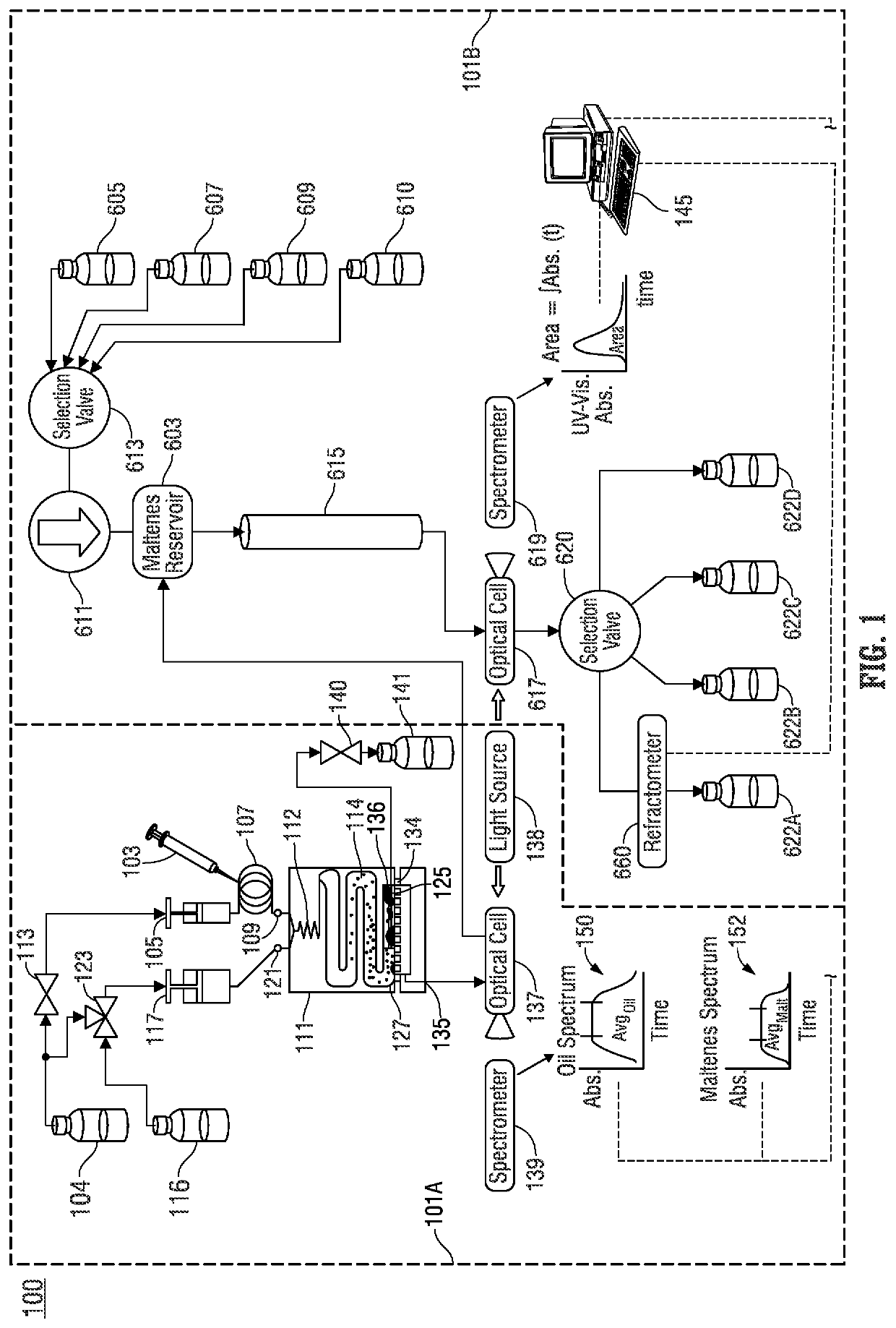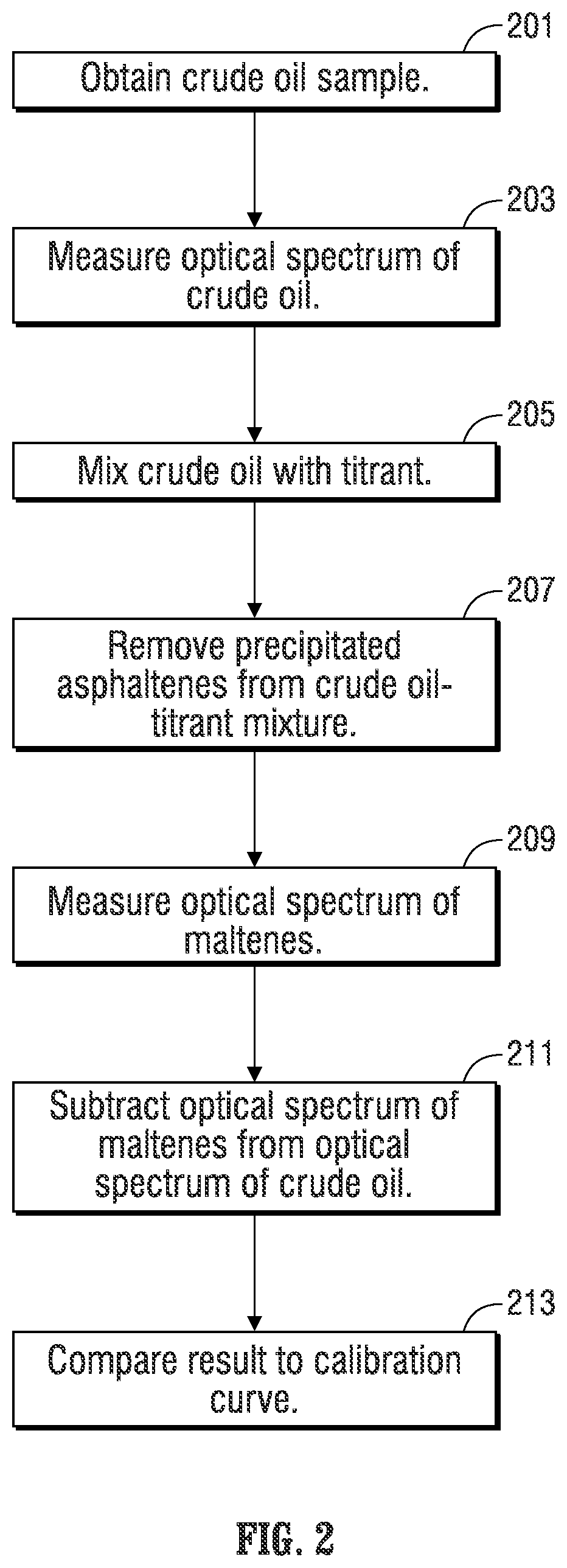Automated method and apparatus for measuring saturate, aromatic, resin, and asphaltene fractions using microfluidics and spectroscopy
a technology of saturate, aromatic resin, and asphaltene, which is applied in the direction of material analysis, instruments, and well accessories, etc., can solve the problems of inconsistent percentages reported to end users, different fractionation, and high cost of techniqu
- Summary
- Abstract
- Description
- Claims
- Application Information
AI Technical Summary
Problems solved by technology
Method used
Image
Examples
Embodiment Construction
[0036]Illustrative embodiments of the disclosed subject matter of the application are described below. In the interest of clarity, not all features of an actual implementation are described in this specification. It will of course be appreciated that in the development of any such actual embodiment, numerous implementation-specific decisions can be made to achieve the developer's specific goals, such as compliance with system-related and business-related constraints, which will vary from one implementation to another. Moreover, it will be appreciated that such a development effort might be complex and time-consuming but would nevertheless be a routine undertaking for those of ordinary skill in the art having the benefit of this disclosure.
[0037]As used herein, the term “microfluidics” or “microfluidic” refers to a device, apparatus, or system that deals with the behavior, precise control, and manipulation of fluids that are geometrically constrained to a small, commonly sub-millimet...
PUM
| Property | Measurement | Unit |
|---|---|---|
| visible wavelengths | aaaaa | aaaaa |
| internal volume | aaaaa | aaaaa |
| internal volume | aaaaa | aaaaa |
Abstract
Description
Claims
Application Information
 Login to View More
Login to View More - R&D
- Intellectual Property
- Life Sciences
- Materials
- Tech Scout
- Unparalleled Data Quality
- Higher Quality Content
- 60% Fewer Hallucinations
Browse by: Latest US Patents, China's latest patents, Technical Efficacy Thesaurus, Application Domain, Technology Topic, Popular Technical Reports.
© 2025 PatSnap. All rights reserved.Legal|Privacy policy|Modern Slavery Act Transparency Statement|Sitemap|About US| Contact US: help@patsnap.com



